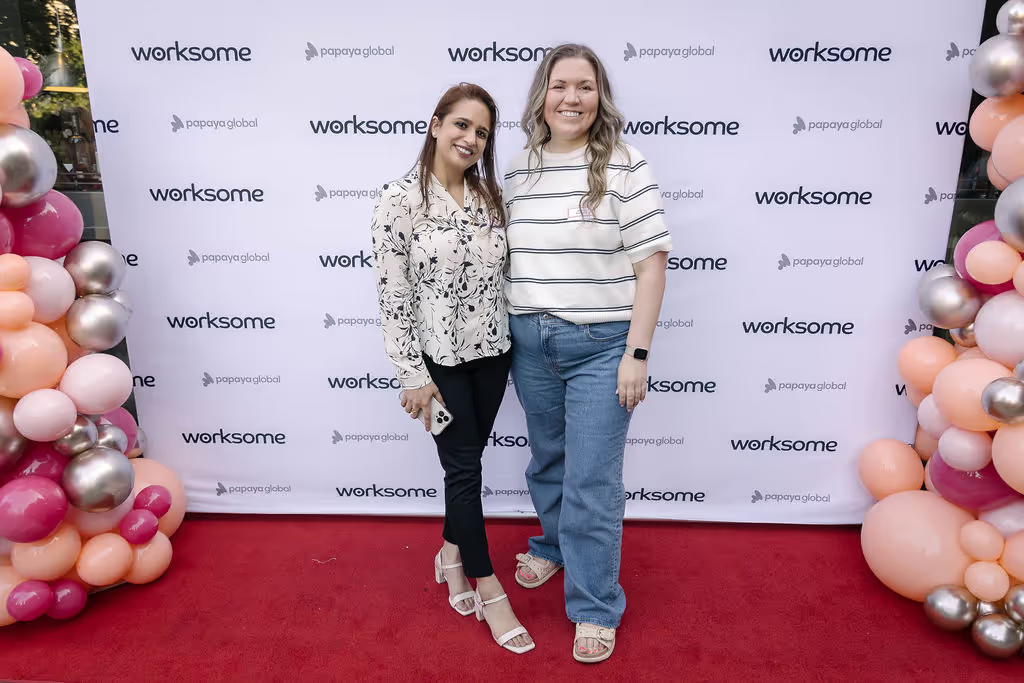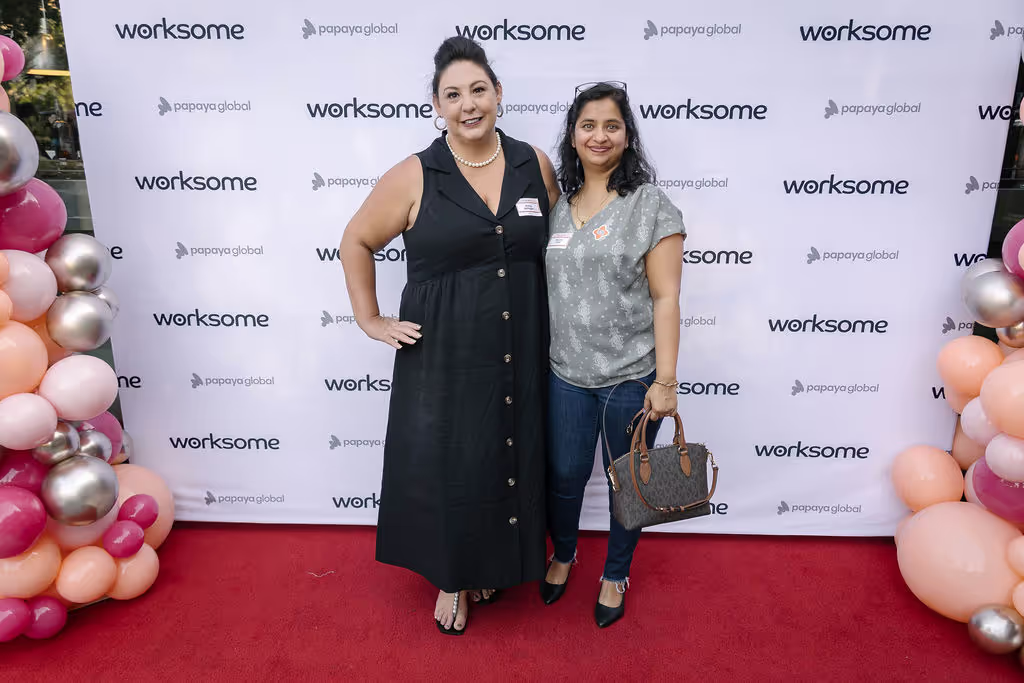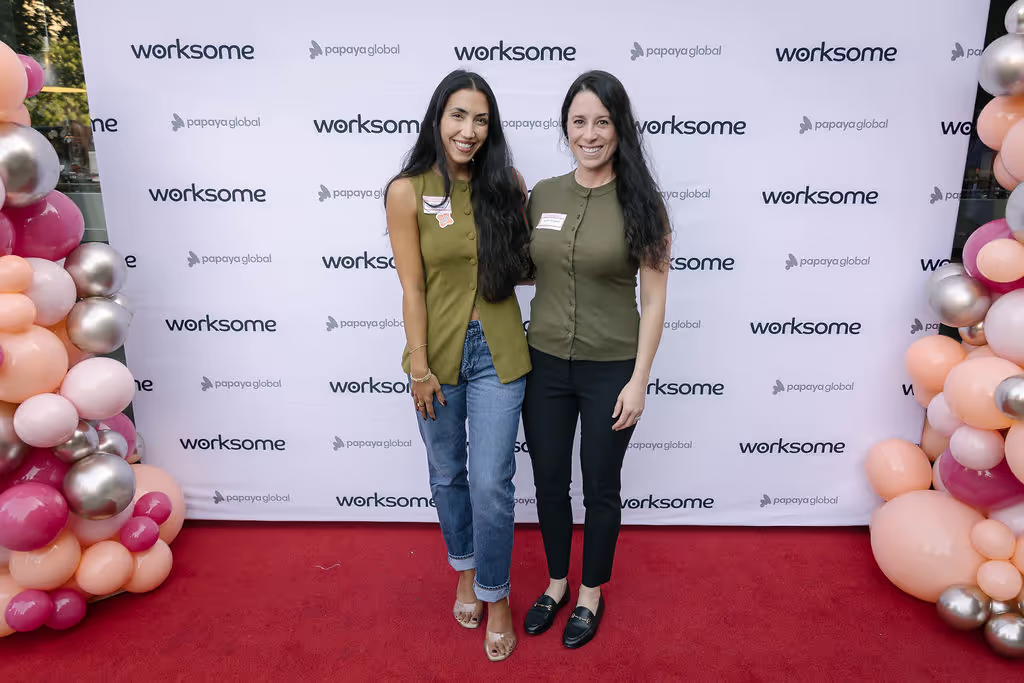Worksome’s first time in-real-life at the Staffing Industry Analysts’ Contingent Workforce Summit. Over 300 procurement & HR folk in a room, exploring Emerging Strategies for Talent, Technology & Risk for two days in a rather nice hotel overlooking Hyde Park here in London.
As a newcomer to SIA and the CWS, and as a technology company that likes asking open, simple questions about how the world works; we often get rather complicated or convoluted answers from large companies with understandably complex operations.
If you’re interested in how a technology company sees the current “stack” of solutions, and have recently thought, “There must be a better way?”... read on.
So here you go, High Fidelity style, our Top 5:
1. Less global, more multi-country
Peter at SIA stated it in his opening keynote, one solution cannot successfully cover the globe. Yet, anyway. Given the event was hosted in the UK, one obvious example raised time and time again was IR35. Seems few end clients want to engage workers Outside IR35 as it's perceived to be too risky. Why? It’s complicated to manage with manual processes at scale. Some organizations have broken these processes down into multi-territory. One organizations we spoke with has 3 MSPs, 3 VMSs, and still only have 60% of their CW program in sight.
"It’s very complicated to manage with manual processes at scale"
Our view
A fragmented strategy and process isn’t so bad if executed well country-by-country. Important to note, though, that a fragmented experience for the suppliers and workers is not. Putting people through layer upon layer of different systems, paperwork, processes; the losers won’t only be the hiring manager trying to get a project off the ground, and the worker trying to actually work, but your organization losing the talent.
A note too on IR35; the reason IR35 isn’t manageable at scale, is because you’re outsourcing a problem that is really best solved yourself - or worse, applying blanket payroll to all workers. The best people to answer IR35-related questions are hiring managers and the worker. Change working practices, stop sending workers through agency payroll, and start classifying workers safely with a tool, that’s backed with insurance, and integrated into the contracting and re-contracting workflow. No wonder there's a "talent shortage" at your organization with current practices in place.
2. Big organizations have forgotten how to hire
Absolutely gobsmacked to hear a dropout rate of 30-50% post-offer, according to one of the client panelists, citing slow onboarding and more attractive offers elsewhere. This isn’t good enough. Why is this happening? It’s too complicated, and people want instant work (this isn’t just a Millenial/Gen Z thing, by the way). Some workers are billing for 3 weeks before getting started. Seems more large companies have outsourced so much staffing that they've forgotten how to hire. Audience questions about “Direct Sourcing 1.0” (shout loud about your brand) in the “Direct Sourcing 2.0” (create a community around your brand) are obvious signs that external workers just haven’t been a considered part of talent strategy for most large organizations. One notable mention of “Direct Sourcing 3.0” (do all of the above but accept that no-one actually cares about your brand), which brought the panel into questioning "What's the point of it all?”
"People want instant work (this isn’t just a Millenial/Gen Z thing, by the way)"
Our view
Years of handling "contingent workers" as risky contingency, outsourcing management to layer upon layer of compliance-led bureaucracy, often leading to late payments. No wonder external workers feel like second class citizens at most large multinationals. Can be easily changed with a shift in approach and a practical application of technology to remove unmeaningful administrative tasks and give visibility to it all.
3. Will the term contingent die a death soon?
Contingent quite literally means ‘dependent on chance’. Which seems to not be how most organizations today are viewing their workforce. The classics, ‘Total Talent’ and ‘Blended Workforce’, were bound around the room on most panels. The reality is, that post-Covid and pre-Global Recession, all companies should have external workers, non-payroll staff, whatever you wish to call them, as a key part of not only their people strategy, but their revenue strategy. If you can’t turn your ship around fast enough, you’re in real trouble.
"If you can’t turn your ship around fast enough, you’re in real trouble"
Our view
People want more, and will keep wanting more. Times aren’t changing, they have changed. There isn’t a talent shortage, there’s an unwillingness to work for companies that don’t add value and meaning to people’s lives. External workers want upskilling, opportunities, community, practical support. As a system and employment intermediary, Worksome puts the ‘Contractor Value Proposition’ at the heart of what we do, whether that’s support for ICs through onboarding or simply offering visibility of payroll so bills can be paid on time. It’s often not complicated, but for obvious co-employment reasons, most organizations and MSPs seem years behind with the idea of community-building; instead pushing people away into the Agency Workers category. This is the real reason there’s a talent shortage in most large organizations.
4. Are MSPs over the Managed part of their Service Provision?
Most if not all are promoting their use of technology and out-and-out recruitment services, perhaps to challenge the rise of Marketplaces like Upwork and Freelancer (or partnering with them). Most large enterprises have Marketplaces as part of their program these days as a kind of side hustle to the core program. Generally most companies are seeing a huge rise in gig workers, self-employed and ICs. One company we spoke to has 17,000 ICs… that they’re aware of. Another has between $10-25 million of unknown spend on platforms and direct hiring. That’s a ~$15million black hole and tax liability that MSPs just can’t handle at scale. One thing’s for sure, more than ever MSPs are repositioning as strategic advisors, promoting talent strategy books they’re authoring, and talking about the future. So, we have organizations outsourcing the management to MSPs. MSPs largely outsource compliance (worker due diligence, screening, worker classifications and payroll) and are now focussing on either staffing or the promise of technology.
"One company we spoke to has 17,000 ICs… that they’re aware of"
Our view
It all feels very castles built on sand. If we look at how Amazon has transformed retail, or Uber transformed delivery, it’s clear to see how incumbent players miss the mark when truly innovating (which often is removing the core business model as it is today). If you take the example of how brands used to buy media, 15 years ago Google began facilitating the conversation to the dismay of the media agencies and the clients. Today it’s difficult to believe a world without Google in the facilitation, but also their role as an intermediary to handle the data, transaction and give visibility to the whole process at such scale. It’s really not too dissimilar to today’s “VMS - Staffing Firm - Compliance Services - Payroll - Worker” arrangement. “It’s got to happen, just how soon none of us know”, as one CW program lead we spoke to put it.
Without technology, simple tasks overwhelm CW programs today. Technology is in everyone’s lives (the average person spends a shocking 4,542 hours in front of a screen each year) but most programs managing the complex, fast and costly contingent workforce are largely analogue. Why?
5. It’s all very complicated, isn’t it?
Incumbent MSPs are finally dabbling in technology, with lots of talk of automation. No real detail given in general, but companies like WorkLlama and CXC seem to be doing good work to cover cracks in the day-to-day largely analogue approach to finding or managing external workers at scale. Marketplaces are being piloted, in or outside of the program, but don’t really fit into the incumbent MSP/VMS setup.
"It’s square pegs and round holes to cover cracks in a largely analogue day-to-day approach"
Our view
From start to finish, it’s square pegs and round holes. Start by solving some key problems instead of looking to reinvent the entire CW program. If you’re seeing a rise in gig workers, get a solution to manage the currently unmanageable spend slipping down the sides of your program. If the majority of workers are currently being handled on payroll by staffing firms, ask why? If you know the experience of using your VMS feels outdated (compared to consumer apps we actually enjoy using), or the MSP you have in place is too slow or can’t handle legislation such as worker classifications, look at alternatives. Is there a better way?
We’re having so many positive conversations post-event already, and most organizations have the same objective; solve some critical problems and scale from there. The main conversation so far have circled around:
- Reducing worker onboarding and screening from weeks to days ⚡
- Reducing liability and increasing visibility across your CW suppliers; from staffing firms to ICs/gig workers to external Marketplaces 👀
- Solving UK & US worker classification (inc. IR35, 1099) and other compliance checks (ID, screening) without adding more layers, systems and risk 💸
- Creating time to build talent instead of wasting time with administration 👨👩👧👧
- Taking control, moving towards an internal MSP model by using technology ✊
There’s no silver bullet or single solution, but the future’s looking really positive. So much energy to embrace the change, and we’re really excited to be a part of something that is already improving thousands of people’s lives. Looking forward to CWS in Dallas this September, another step closer in our mission; to make work, work.



































